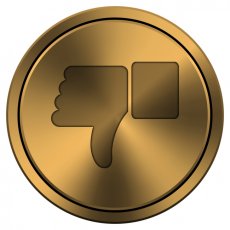 If you’re advertising your brand on Facebook, you’ve likely seen this recent video (below) from Derek Muller on Facebook fraud. If you haven’t watched yet, brace yourself for the number of Facebook advertising likes that are fake, and the damage those fake fans cause to your social reach and return on investment. To beat the threat of fake likes, you’ll need to focus on engagement, a strong core fan base, and contextual ads that draw the genuine fans needed for ROI.
If you’re advertising your brand on Facebook, you’ve likely seen this recent video (below) from Derek Muller on Facebook fraud. If you haven’t watched yet, brace yourself for the number of Facebook advertising likes that are fake, and the damage those fake fans cause to your social reach and return on investment. To beat the threat of fake likes, you’ll need to focus on engagement, a strong core fan base, and contextual ads that draw the genuine fans needed for ROI.
Fake Likes Are All Around Us
Muller walks through the predictable scenario of buying 1, 000 likes for $70 from a disreputable “click farm” site — 1, 000 unengaged fake fans who like hundreds of other pages, and never come back to engage with the brand after that first like. The negative effect of these fans is obvious.
The plot twist most impactful to brand marketers comes when Muller reveals that legitimate ads purchased directly through Facebook produce an alarming number of likes from seemingly fake profiles. The theory provided is that click farmers are also liking legitimate Facebook ads to obfuscate all of the fake ads they’re paid to like.
This hurts big brand marketers in more than just the most obvious sense. Brands with fraudulent fans have a potentially significant handicap when it comes to organic reach. When a brand posts, Facebook trickles that post out initially to a tiny fraction of the brand audience. Based on those fans’ initial engagement with the post, Facebook determines post quality and what percentage of the brand’s full fan base to feature that post to. If 50 percent of fans are fake and never engage, the post will perform one-half as well as it should on the initial test run, and, therefore, suffer from low organic circulation, a very common gripe for brands.
The cost of ownership for these toxic brand frenemies is just now coming to light with reduced organic reach and reduced performance on paid reach. This is a potentially systemic problem that needs a larger fix, but there are some real changes in tactics and strategy that brands can employ to counteract these effects and increase their performance.
Likes Are A Vanity Metric: Engagement Is King
The most basic change is to stop counting likes. Focus on engagement. As the founder of a company that’s positioned itself as “after-like marketing, ” I’ve long emphasized engagement as primary, and like counts as secondary, but in light of what we’re learning, it might be best to remove likes even as a secondary success metric. Kicking the likes addiction might be tough within organizations that have had them at the top of the scorecard for so long, but their emphasis has come at the expense of performance. Brands owe it to themselves, and smart agencies owe it to their clients to lead them beyond likes.
Size Isn’t Everything: Strengthen Your Core Fan Base
It’s easy to focus on the big numbers of your fan community and lose track of the people behind those numbers. Find and foster relationships with top superfans within your community first. Cultivate a deeper relationship with this smaller group of ambassadors — make it personal, give them a reason to share and engage week over week, and then expand while keeping that base as your center.
Ads Still Work: Focus On Social Context
Facebook ads can still work, but only if you’re smart with what you’re buying. Don’t buy for likes, and don’t talk to strangers, or anyone you can’t reach through social context. Facebook announced that it is retiring sponsored stories in April, but in place of the popular ad format, the social network is including social context, or the actions of friends, in every single other ad format.










